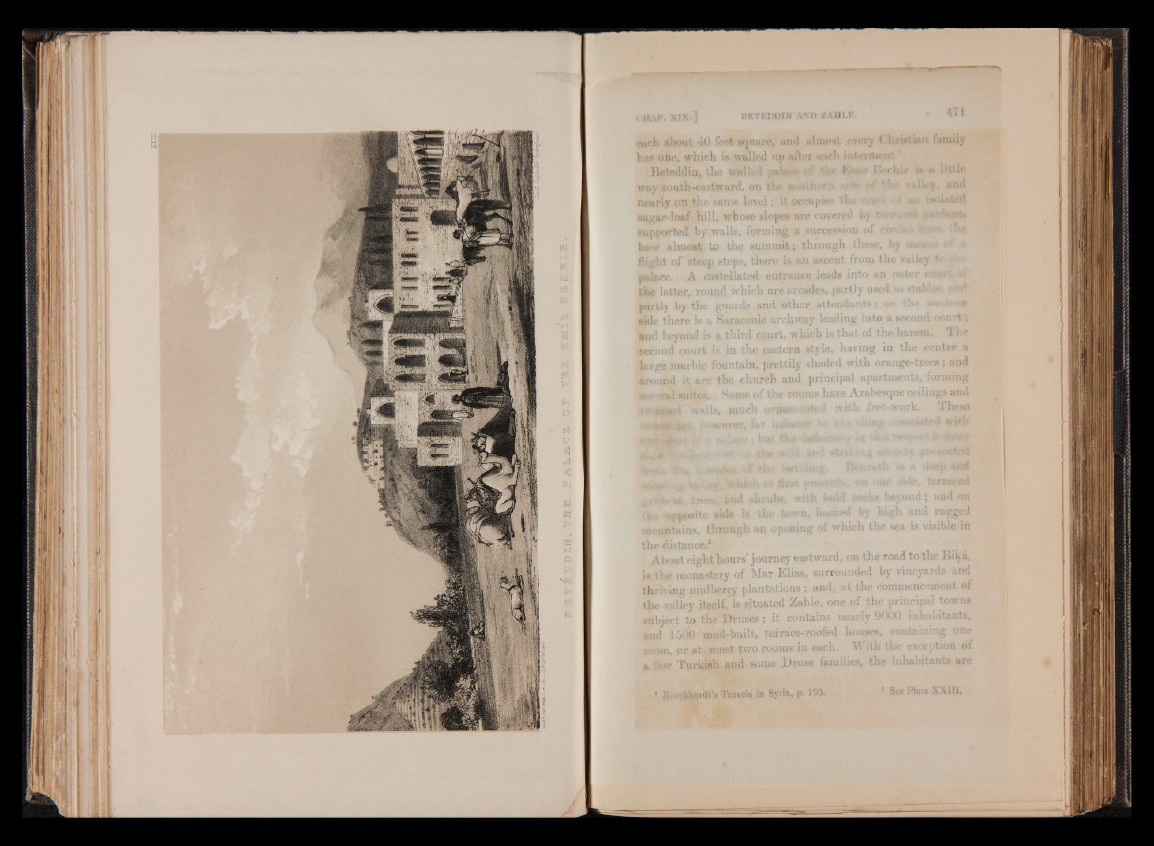
JB IW . T H E
each about 40 feet square, and almost every Ciyustian. family
has one, which, is walled up after each interment
Beteddin, the walled p»W*'• Emir Bechw » •* little
way south-eastward, on the Bmtihftn? smc ■ valley, mm
nearly on the same level; it occupies the ffiagw ' ; aw
sugar-loaf hill, whose slopes are covered by *<# r i *w r^»ne»«i
supported by walls, forming a succession of cirote* Ijwa* in«
base almost to the summit; through these, by means e# «
flight of steep steps, there is an ascent from the valley ' ■ ■
palace. A castellated entrance leads into an outer court
the latter, round which are arcades, partly used as st&bb&y
partly by the guards and other attendants; on the welter#
side there is a Saracenic archway leading into a second court?
and beyond is a third court, which is that of the harem. 1 he
second court is in the eastern style, having in the centre a
large marble fountain, prettily shaded with orange-trees, and
around it are the church and principal apartments, forming
.it-..' '-'“al suites. Some of the rooms have Arabesque ceilings and
' walla much nmwriAUffcid with fret-work. These
■■■•.jritr-m ami d in ts , with bold rocks beyond; and on
■ opposite side is the town, bncxed by high ana rugged
«so»»tains, through an owning of which the sea is visible in
the distance.®
About eight hours’ journey eastward, on the road to the Bika,
is the monastery of Mar Elias, surrounded by vineyards arid
thriving mulberry plantations ; and, at the commencement of
the valley itself, is situated Zahle, one of the principal towns
subject to the Druses; it contains nearly 9000 inhabitants,
and 1500 mud-built, terrace-roofed houses, containing one
itxm, or at most two rooms in each. With the exception of
a few Turkish and some Druse families, the inhabitants are
liardt’s Travels in Syria, p. 193. " See Plate XXIII.